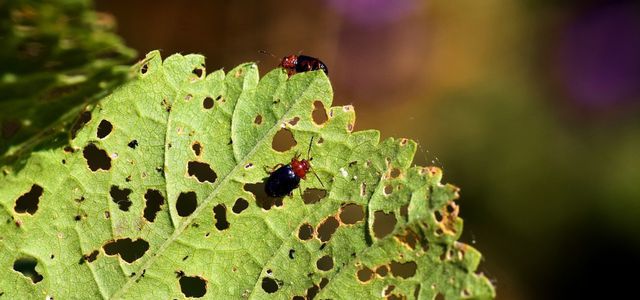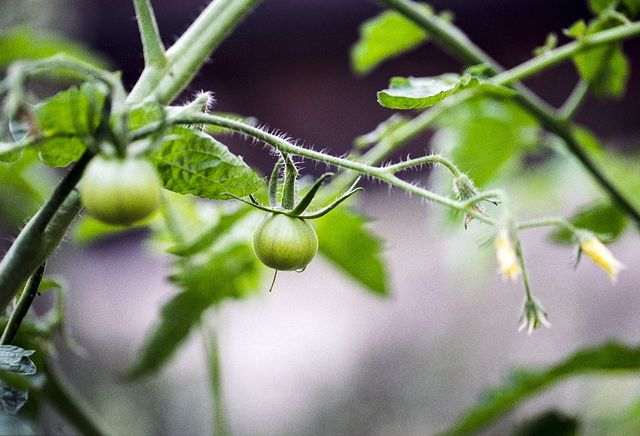
Fleas like vegetables: they eat away at and damage young plants in particular. With a few natural tricks, you can prevent fleas and combat an infestation.
Contrary to their name, fleas are not fleas – they belong to the leaf beetle family. These small beetles are one to three millimeters long and feed on vegetable plants, especially broccoli, peppers, or tomatoes. Because they eat the leaves, they can cause severe damage, especially to young plants. Affected plants can become wilted or stunted as a result.
Contents
Detect fleas
Ground fleas are very small and often difficult to see with the eye. In addition, the small beetles come in many different colors: some are black, others bluish or striped.
You can more easily identify the beetles by the damage they leave on your plant. If the leaves have many small round holes, a ground flea is responsible.
Preventing ground fleas: taking care of plants
To prevent your plants from being infested by leaf beetles, you can take preventative measures:
Loosen the soil regularly and remove weeds. This will scare away ground fleas – they prefer quiet and dark places.
Water your beds regularly and keep the soil moist, because ground fleas prefer dry soil. A layer of mulch can help keep the soil moist longer and prevent ground fleas in the long run.
Plant garlic or onions in your vegetable patch. Ground fleas do not like these plants and will avoid the bed.
Care for your plants. Healthy plants that get enough nutrients are less likely to be infested and are better able to regenerate.
In general, pests are less likely to occur if your garden provides a wide habitat: other beetles, hedgehogs, mice, and ichneumon wasps are natural enemies of ground fleas.
Control ground fleas naturally
Ground fleas are very small and often difficult to see with the eye. In addition, the small beetles come in many different colors: some are black, others bluish or striped.
You can more easily identify the beetles by the damage they leave on your plant. If the leaves have many small round holes, a ground flea is responsible.
Preventing ground fleas: caring for plants
To prevent your plants from being attacked by leaf beetles, you can take preventative measures:
Loosen the soil regularly and remove weeds. This will scare away ground fleas – they prefer quiet and dark places.
Water your beds regularly and keep the soil moist, because ground fleas prefer dry soil. A layer of mulch can help keep the soil moist longer and prevent ground fleas in the long run.
Plant garlic or onions in your vegetable patch. Ground fleas do not like these plants and will avoid the bed.
Care for your plants. Healthy plants that get enough nutrients are less likely to be infested and are better able to regenerate.
In general, pests are less likely to occur if your garden provides a wide habitat: other beetles, hedgehogs, mice, and ichneumon wasps are natural enemies of ground fleas.
Control ground fleas naturally

If your vegetable patch is already infested with ground fleas, you can fight them naturally.
Radish, broccoli and peppers are particularly fond of fleas. To keep the beetles away from the rest of the vegetables, you can attract them with a decoy plant. This should be larger than the affected plants and already in bloom. Care for the attractant plant as little as possible – the beetles like quiet, dark and dry soil.
Garlic and onion also work as a decoction. Boil the bulbs, let the decoction cool, and then spray it on affected plants.
Provide natural enemies such as hedgehogs, ichneumon flies or other beneficial insects. In the right environment, beneficial insects will come naturally. In addition, you can hang cards with ichneumon eggs in your tree.
Ecological sticky traps should be used as a last measure in case of a persistent infestation. Distribute the traps on the affected plants and remove trapped beetles. In the wake of insect mortality, however, you should think twice about using a deadly trap to deal with the beetles.









